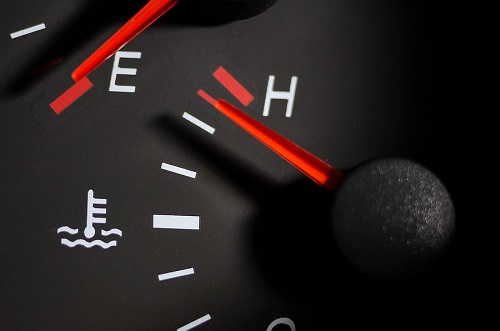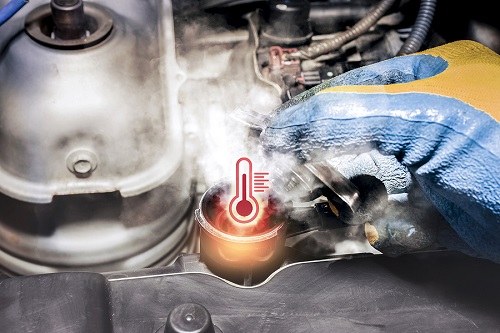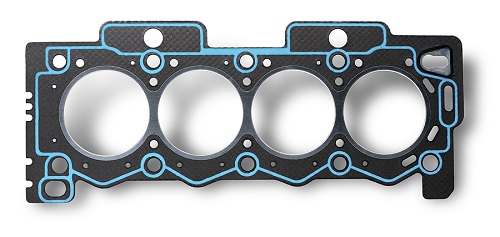With temperatures soaring across Europe this summer, there’s perhaps something of an irony in that nature can hit back at the car for all those CO2 emissions that have been triggering climate change — excessively hot weather can cause your car to overheat, which can lead to permanent engine damage.
Of course, in Ireland we’re much less likely to get the sort of 30-degrees+ temperature that would cause a rash of overheating, but any engine can overheat even on a relatively cool day, especially if the cooling system has been damaged in some way. So, what do you do if your car overheats?
Heat generation
Any petrol or diesel engine generates a great deal of heat. You’ll often hear that the best and most frugal engines are around 40 per cent efficient — that means that 40 per cent of the potential energy in each litre of fuel burned is turned into power that drives the wheels. Which means that the other 60 per cent of the fuel’s energy simply gets turned into heat.
That heat is controlled by the car’s cooling system which pumps water around the edges of the engine’s cylinders and head, and cools that water in the radiator, dissipating the heat. It’s often said that the internal combustion engine is better at producing heat than it is at producing motive power, and when you see the 90-odd per cent efficiency of an electric motor, you might agree.
What if all that starts to go wrong?

Generally, a petrol or diesel engine will settle into a working temperature of around 100-degrees celsius. That’s hot enough to boil water, but the water in the cooling system is being constantly moved around, and the cooling system’s expansion tank allows the water to do just that — expand as it’s heated. And so, all is well. Right up until it isn’t…
A blocked or damaged radiator, or corrosion or blockage in one of the cooling channels can cause your car’s engine temperature to spike. Equally, if it is a really hot day, and your trickling along in slow moving traffic, it may be that there’s not enough cool air being passed through the radiator to keep your car within its working temperature and you may see your engine temperature gauge start to go up, or you may get a warning light on the dashboard.
Potential remedies
If this happens, there are a few potential remedies which might help you get home without damaging the engine. Generally speaking, the best thing to do is to pull over — if it’s safe to do so — and let everything cool off. If your problem is that you’ve been driving too slowly in too hot conditions and there just hasn’t been enough air getting through, this might be enough to fix the problem.

If you can’t pull over, then one thing you can do is turn up the heat on your car’s air conditioning, and open all your windows. The heater in your car works by using a heat exchanger to draw waste heat from the engine (this is why your windows take ages to defrost in winter — your engine has to warm up first). A heat exchanger is basically a type of radiator, so now you have an extra radiator for your car. Unfortunately, it’s now dumping hot air into the cabin, which is going to make things very uncomfortable for you, so this is very much a short-term fix to get you home or get you to a garage.
It is possible that your coolant levels have run low — most likely because of a leak in the system — so topping that up can help, but just beware of a couple of things. If your engine is running too hot, then the coolant system cap will have also become very hot, so be very, very careful when removing it so that you don’t get contact burns from the cap, or that you don’t get searingly hot water or steam in your face (you need to be careful in this respect when opening the bonnet, too). It’s better to do the top-up after the car has had a chance to sit still and cool down first, for at least 15-20 minutes.
Action required

Once you do get home, make sure you get your car into your local garage or mechanic as quick as you can, as any cooling system problems need to be dealt with and fixed as quickly as possible. Why? Because if not, you can cause catastrophic damage to your engine. A common problem — before modern thermostats and more efficient radiators — would be a head-gasket failure. The head gasket is the seal which keeps the water cooling and oil systems of your engine separate, and a engine that’s overheating can warp and disfigure itself ever so slightly, breaking the head gasket and allowing water and oil to mix. This is what causes the tell-tale ‘mayonnaise’ — white deposits of mixed oil and water on the car’s dip-stick, which is a classic sign of head gasket failure and which means significant damage inside the engine.
In the worst case scenario, an engine running too hot for too long will simply seize solid, as the pistons will start to expand from excessive heat within the cylinders, and will eventually simply not be able to move. At this point, your engine has ceased to be an engine at all, and is now simply a big lump of metal which you’re going to have to expensively replace.
How can you prevent your car from overheating in the first place?
Simple — keep your car regularly serviced and properly maintained. It’s recommended that most engines need a complete cooling system flush and check every 65,000km at the very least, and you should always keep an eye on your coolant and anti-freeze levels all year round.
